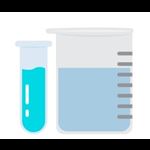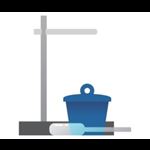
Bottles & Containers
A lab bottle for every need in your academic lab. Whether it be glass or plastic, dropping bottles or collection bottles, narrow or wide-mouth, round or square, jars, carboys, pails, crates etc. Flinn Scientific has the chemical chemistry lab bottles and containers for your classroom. Lab chemistry relies heavily on glassware to mix, separate, condense, or otherwise contain and manipulate chemicals and their environment to create the wanted reaction conditions. From ampules to volumetric flasks and complete distillation systems, we have the chemistry glassware that fits your analytical needs. It’s essential to select the right bottles, flasks, jars, beakers, and accessories.












